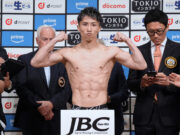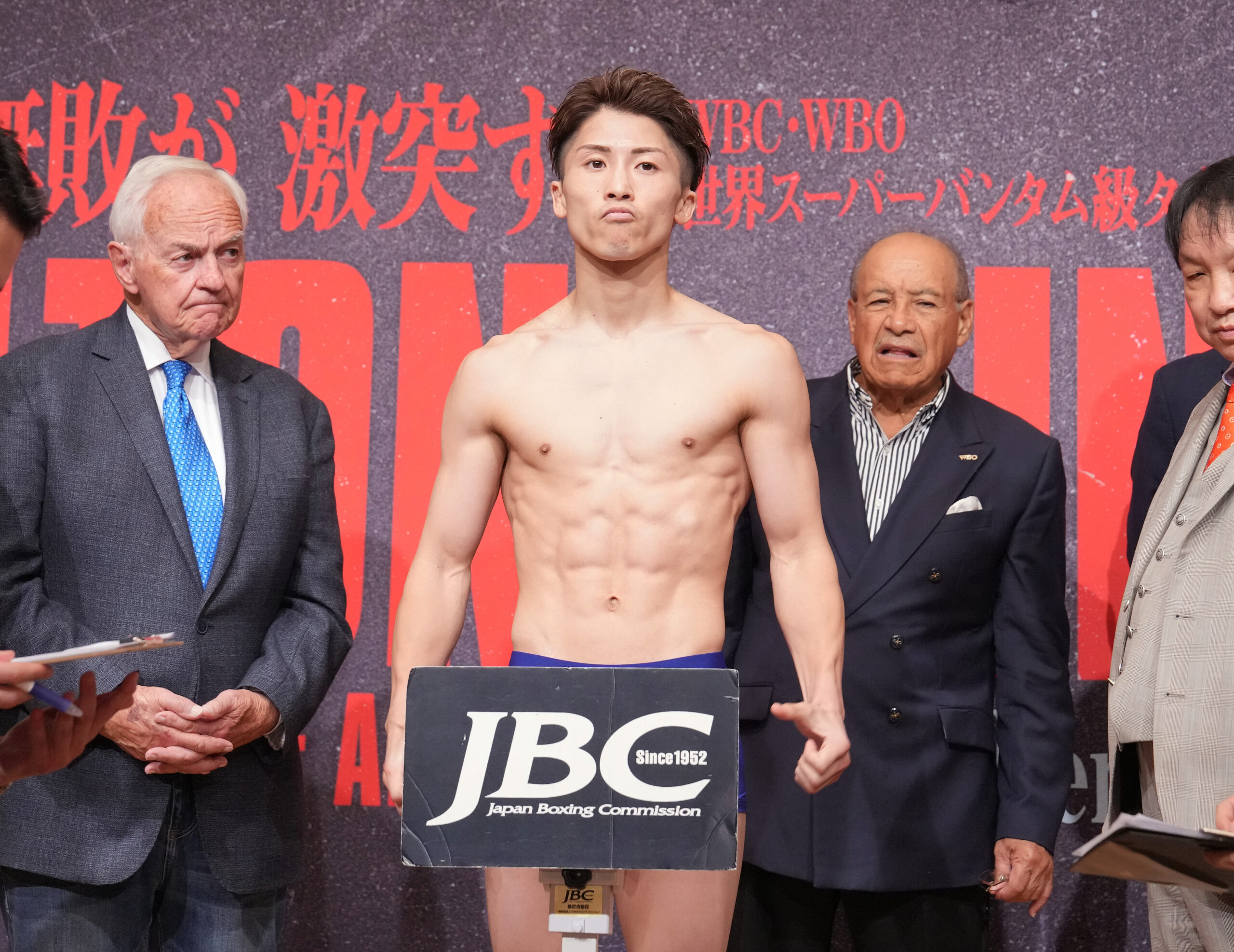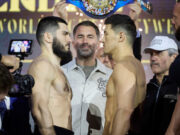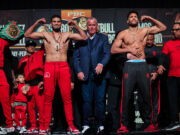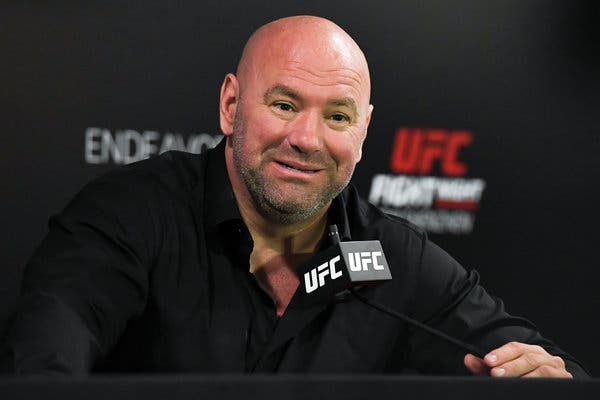
By Norm Frauenheim-
At first, Dana White said he was going to stage the UFC’s next event on an island. Then, there was news that he decided on Native-American land in Central California, instead.
Guess Rikers Island wasn’t available.
Turns out, nothing was.
White can bully reporters, but he couldn’t bully his bosses at ESPN and parent-company Disney to go forward with his plans for UFC 249 on April 18. They said no.
“The powers that be there asked me to stand down and not do this event,” White said Thursday in an interview with ESPN, which was contracted to televise the event.
It was a surprising move. ESPN is desperate for live content. White is nothing if not defiant and defiance defines the UFC, even more so than boxing.
White expressed it in a style both pugnacious and pigheaded throughout the last several days. The cage czar sounded as if he still believes that coronavirus is either a hoax or as harmless as the common cold.
A mounting death toll says something else.
Defiance isn’t a vaccine
Yet, the cage czar marched on, a man who behaved like an island, even though it didn’t look as if he had found one.
He was a character out of an old movie, Apocalypse Now, a film loosely based on Joseph Conrad’s Heart of Darkness, a novel with a title that sums up the times. White is a composite, two characters in one.
He looks like Marlon Brando’s version of Colonel Kurtz, an eccentric and deranged version of a Green Beret officer hidden in the jungle at the end of a Viet Nam river. He often behaves and sounds like Robert Duvall’s version of an Air Cavalry commander who blows away a Viet Nam village with his helicopter gunships, surfs to celebrate and then says:
“I love the smell of napalm in the morning.’’
Translation: The risk of a few more body bags is just the price of doing business. But the potential cost in terms of perception and public health was just too steep for the network.
White was trying to cross a line that not even boxing could. Boxing, never a role model, has done business with notorious dictators and regimes.
There was George Foreman-versus-Muhammad Ali in 1974 in then Zaire in a deal with despot Mobutu Sese Seko.
In 1975, there was the third Ali-Joe Frazier fight in Manila in a deal Don King negotiated with Ferdinand Marcos.
Last October, Eddie Hearn took the Anthony Joshua-Andy Ruiz Jr. rematch to Saudi Arabia in a deal arranged by a monarchy seeking to distract from its history of repression. The bout was called part of the Kingdom’s “sports wash” policy.
Nothing new about tyrants and thugs in boxing. They are a known risk. Caveat emptor. For now, however, coronavirus is a different kind of risk. A very different kind of tyranny. Only a fool messes around with Mother Nature. She never taps out.
But White, perhaps like his friend President Donald Trump, didn’t appear to have much respect for nature. Trump, an ex-boxing promoter and current promoter of controversial hydroxychloroquine, had been as serious about coronavirus as he has been about climate change.
Trump’s attitude appears to have to have been altered, perhaps by experts or scientific data or just the simple fact that his soul mate, British Premier Boris Johnson, spent a few days in intensive care.
But the stubborn White tried to move forward anyway, with a pay-per-view show on April 18 at the Tachi Palace Casino Resort near Fresno. White didn’t plan the move because Tribal land is somehow immune.
It’s not.
On the Navajo Nation in northern Arizona and western New Mexico, there were 384 infections, according to reports late Thursday. A reservation-wide curfew was ordered through Easter weekend, April 10-April 13.
The reason White wanted to move onto Native-American real estate is all about jurisdiction, jurisdiction, jurisdiction. It’s not subject to state law. There’s an ongoing ban of boxing and mixed-martial arts throughout California. But that doesn’t apply to Tribal land.
White’s attempted move to property outside traditional regulation isn’t new. It happened in June 2007. Tommy Morrison, a former heavyweight champion, made his MMA debut at the Yavapai-Apache Nation in a hillside arena on the east side of the freeway from Phoenix to Flagstaff, AZ.
Morrison was found to be HIV-positive in 1996. A decade later, however, he insisted he was HIV-free, even amid questions about the validity of the blood tests he underwent.
On Apache land, he was not subject to testing. Before the bout, Morrison’s former agent Randy Lang told me, then a sportswriter for The Arizona Republic, that Morrison had tested positive for HIV as late as January 2007.
But the bout went on anyway, including rule changes. Morrison was allowed to wear shoes. His opponent, John Stover, a Native American from South Dakota, was not allowed to strike with his knees or feet. Morrison won, breaking Stover’s nose within two minutes.
Morrison left the ring, still insisting he was HIV-free.
Nearly 69 months later – Sept. 1, 2013 – Morrison, 44, was dead, just weeks after Morrison’s mom told ESPN that her son had full-blown AIDS.
“He’s too far gone,” she said. “He’s in the end stages. That’s it.”
It’s a sad story. It’s an important one to remember. Important not to repeat, too. Not on Native-American land. Not on an island. Not here. Not anywhere. And, above all, not now.



